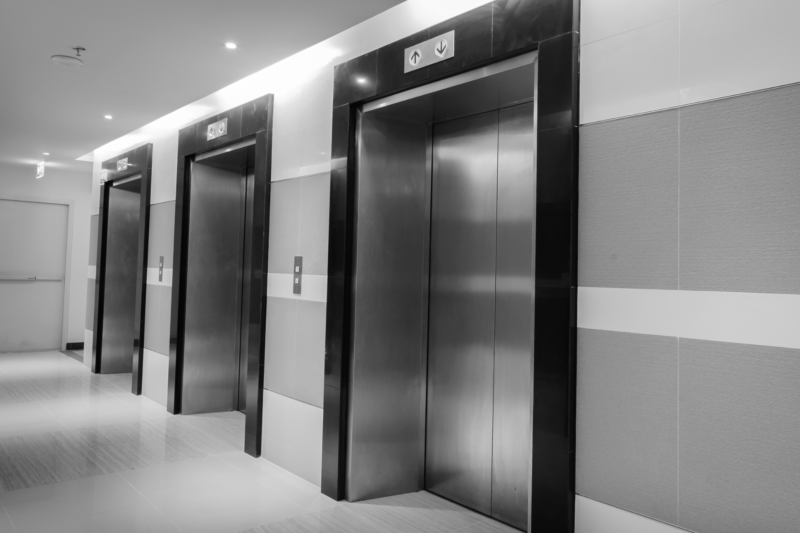
There is a joke in property maintenance that if you want to ensure you’re never out of work, get into the elevator repair business! Every property manager knows that elevators have a knack for breaking down regularly. But elevator maintenance is about more than ensuring people get an easy ride to their homes or offices. No property manager wants an elevator accident on their watch, which raises the question, how often should elevators be inspected?
Every year, people get hurt on elevators and escalators. For example, in 2021, elevators and escalators caused injuries to 38 people in New York City alone.
Let’s explore the answer to this crucial question together, so you can keep the residents of your buildings safe.
How Often Should Elevators Be Inspected?
Elevator safety is of importance to state legislators, as well as to commercial property managers. So to answer this question, you must first check the law in your state and ensure that your business is following all of its requirements.
Most states require annual elevator inspections. However, local county and city ordinances may require them more regularly.
In reality, most elevators need much more frequent inspections. If you have a contract with an elevator maintenance company, it may include visits every three months. If your elevator is in constant use, a monthly inspection may be needed for safety. A contract or frequency of use will affect how often elevators should be inspected.
Find Commercial Elevator Contractor
Case Study: New York City Elevator Law
New York City has reduced the number of elevator accidents that occur each year. They peaked in 2016 with 104 injuries but were down to 38 just five years later. One of the reasons for this improvement may be the city’s requirement that commercial elevators be inspected and tested twice a year. The city carries out this unannounced testing in addition to the regular elevator maintenance program.
Building owners must have a maintenance contract with an approved elevator maintenance agency. They must also keep a maintenance log that details maintenance and repairs carried out. Commercial property managers must also apply for permits to carry out elevator repairs.
All of these measures ensure that elevators work safely, reducing the likelihood of serious injuries or even death due to elevator accidents.
Other Considerations
Each manufacturer provides guidance on how often their elevators should be inspected. Generally, they will recommend a minimum annual inspection, but there are other factors to take into account.
For example, how often is the elevator used? A commercial elevator in a busy office building or hospital may be in constant use for many hours a day. This will put extra strain on it, requiring more regular maintenance.
Following the manufacturer’s guidance is crucial. This can help reduce the likelihood of major faults developing, and if the elevator is relatively new, it may help to preserve the warranty. This will all affect how often elevators should be inspected.
What’s Involved in an Elevator Inspection?
A routine elevator inspection cannot be rushed. It is a crucial chance to spot problems before they become serious. It is a good idea to give your residents lots of notice and try to schedule the inspection for a time when the elevators are not in constant use.
The inspection will focus on five main areas:
- The exterior of the elevator car
- The interior of the elevator car
- The machine room
- The car top
- The elevator pit
Find Commercial Elevator Contractor
Elevator Cab Exterior
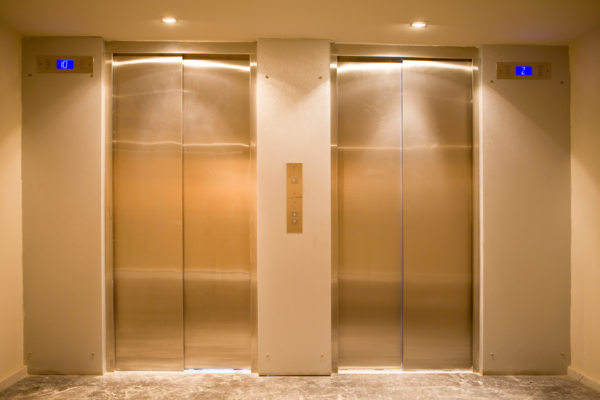
When it comes to elevator maintenance, the exterior of the elevator cab is just as important as the interior. The exterior visual inspection is a crucial aspect of elevator maintenance. This ensures that the elevator is functioning properly and safely for passengers.
Firefighters’ Service System
The technician will inspect the firefighters’ service system and door lock controls. The firefighters’ service system is a special mode that allows firefighters to access the elevator during an emergency. The technician will ensure that this system is functioning correctly and that the controls are working correctly.
Door Locks
Door lock controls are another essential aspect of elevator safety. These controls ensure that the elevator doors cannot be opened when the cab is not on the floor. The technician will check that the door lock controls are functioning correctly. This includes verifying that they prevent passengers from entering or exiting the elevator cab when it is not properly aligned with the floor.
If the technician finds any issues with the firefighters’ service system or door lock controls, they may need to perform minor repairs to fix the problem. These repairs will typically be covered under the service contract, which outlines the scope of work that the technician will perform during each maintenance visit.
Find Commercial Elevator Contractor
Elevator Interior
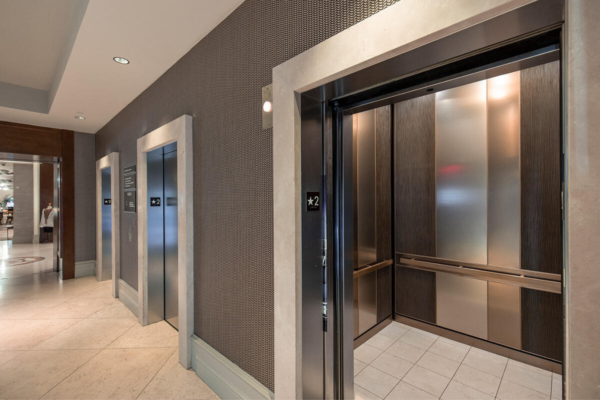
The interior of an elevator is an important part of the overall passenger experience, and it is essential that it is
kept in good condition to ensure passengers’ safety and comfort. Unfortunately, vandalism and regular wear and tear can cause damage to the elevator’s interior, so it is important to inspect and maintain it regularly.
Look for Damage
During an elevator inspection visit, the technician will thoroughly inspect the entire interior of the elevator, including the walls, ceiling, and floor. They will look for any signs of damage or wear and tear, such as scratches, dents, or scuff marks, and note down any necessary repairs.
Call Buttons and Handrails
One area that is often targeted by vandals is the call buttons. The technician will check each button to make sure they are working correctly and not damaged. They will also inspect the handrails and grab bars. This ensures that they are secure and not loose, which could pose a safety hazard for passengers.
Find Commercial Elevator Contractor
Lighting
The technician will also examine the lighting in the elevator. They will ensure that all interior lights are functioning correctly, including the emergency lights, which are essential in case of a power outage. If any lights are not working, the technician may need to replace the bulbs or perform other minor repairs.
If the repairs needed are related to the immediate functioning and safety of the elevator, they will be addressed during the inspection visit. However, if the repairs are cosmetic or not related to the immediate functioning and safety of the elevator, they may be carried out at a later time, depending on the terms of the service contract.
In addition to inspections and repairs, the technician may also clean the interior of the elevator during the maintenance visit. This includes vacuuming the floor and wiping down the walls and other surfaces, leaving the elevator looking and smelling clean.
Elevator Car Top
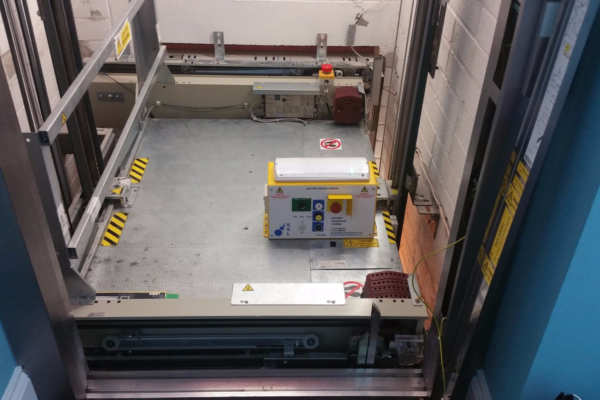
The elevator car top is an essential part of the elevator that contains many crucial systems that control its operation. It is important to inspect and maintain the car top regularly to ensure that these systems are functioning correctly and to prevent potential safety hazards.
Inspect Hoist Ropes, Guide Rails, and Roller Guides
During an elevator inspection visit, the technician will carefully inspect the hoist ropes, guide rails, and roller guides that control the elevator’s movement. They will look for signs of wear and tear, such as fraying or damage to the ropes, and check that the rails and guides are secure and properly aligned. Any issues with these components could cause the elevator to operate improperly or even break down, leading to safety concerns for passengers.
Clean Car Top
The technician may also clean the top of the car during the inspection. Dust and dirt accumulation on the top of the car could cause issues with the elevator’s operation, such as interference with the sensors or other equipment. Cleaning the top of the car will help prevent these issues from arising and ensure the elevator runs smoothly.
Find Commercial Elevator Contractor
Rodent Damage
Another potential issue that the technician will look for during the inspection is rodent activity. Rodents can cause significant damage to the elevator’s electrical components, such as chewing through wires or nesting in electrical boxes. The technician will check for any signs of rodent activity, such as droppings or chewed wires, and take steps to address any issues found.
If the technician identifies any issues with the hoist ropes, guide rails, or roller guides, they may need to perform repairs or replace these components to ensure the elevator’s proper operation. This work will typically be covered under the service contract, which outlines the scope of work that the technician will perform during each maintenance visit.
Elevator Pit
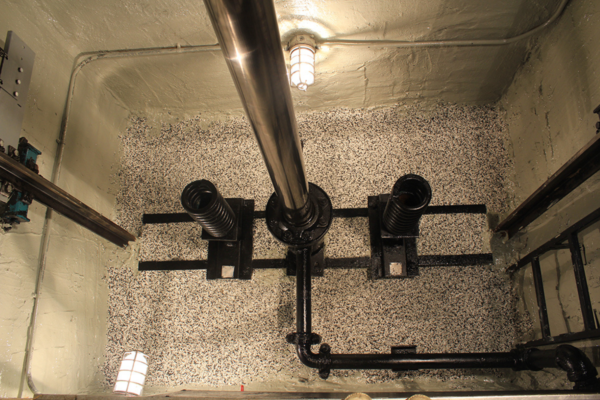
The elevator pit is the space located beneath the elevator car when it reaches the lowest floor. This pit plays a crucial role in the elevator’s overall operation. During an elevator inspection visit, the technician will inspect the elevator pit to check for any potential issues that could impact the elevator’s performance or safety.
Moisture Accumulation
One issue that the technician will look for during the inspection is moisture accumulation in the pit. Water can seep into the pit from the ground or from leaks in the elevator equipment. This moisture can cause damage to the elevator components over time. The technician will look for signs of moisture, such as puddles or wet spots, and take steps to address any leaks or other issues found.
Dirt and Debris Accumulation
The technician will also check for dirt and debris accumulation in the pit. Dirt and debris can accumulate in the pit, potentially causing issues with the elevator’s operation. The technician will clean the pit and remove any dirt or debris that could cause problems.
Find Commercial Elevator Contractor
Sump Pump
Another critical component that the technician will check during the inspection is the sump pump. The sump pump is responsible for removing any water that accumulates in the pit. It plays a vital role in preventing damage to elevator components. The technician will ensure that the sump pump is working correctly and take any necessary steps to repair or replace it if it is not functioning properly.
Elevator Buffers
Finally, the technician will check for wear and tear on the elevator buffers, which are safety devices designed to protect the elevator car and passengers in case of a malfunction. The buffers are located at the bottom of the elevator shaft and absorb the impact if the elevator car travels beyond the lowest floor. The technician will ensure that the buffers are in good condition and functioning correctly to ensure passenger safety.
Elevator Testing
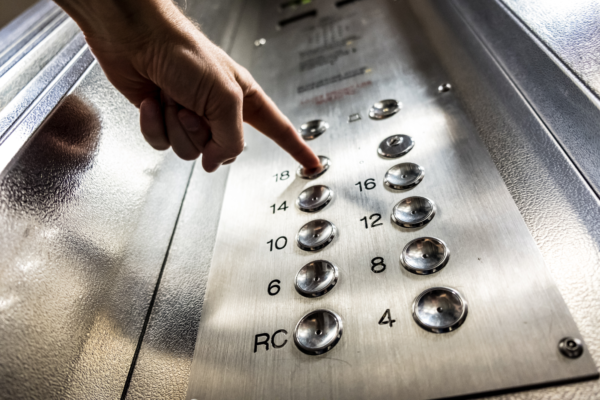
Elevator testing is a critical part of the elevator inspection process, as it ensures that the elevator is operating correctly and safely. During an elevator inspection, the technician will conduct a series of tests to check various aspects of the elevator’s operation, including leveling, door operation, and movement between floors.
Level of the Elevator Car
One important aspect of elevator testing is checking the leveling of the elevator car. If the elevator does not level correctly on each floor, it can create a tripping hazard or cause passengers to stumble while entering or exiting the elevator car. The technician will check the leveling of the elevator car on each floor to ensure that it is functioning correctly.
Find Commercial Elevator Contractor
Door Operation
Another important aspect of elevator testing is checking the door operation. The doors of the elevator must open and close smoothly and quickly to prevent passengers from getting stuck in the doors or experiencing other accidents. The technician will check the door operation and timing to ensure that it is functioning correctly.
Elevator’s Movement
Finally, the technician will test the elevator’s movement between floors. The elevator must move smoothly and quickly between floors to prevent passengers from experiencing injuries or discomfort. The technician will test the elevator’s acceleration and deceleration to ensure that it is moving safely and smoothly.
If the technician identifies any issues during the elevator testing process, they will take steps to address the issue immediately. This may involve repairing or replacing components or adjusting the elevator’s settings to ensure proper operation. By conducting regular testing and addressing any issues found, the technician can help ensure that the elevator operates safely and efficiently for all passengers.
After the Inspection
The technician will create a detailed report that outlines the condition of the elevator. This report is an important document that can help the property manager understand any issues or concerns that need to be addressed. The report will typically include a list of any repairs that need to be made, as well as an assessment of the overall condition of the elevator.
The property manager will be responsible for reviewing the report and ensuring that any necessary repairs are made promptly. If the issues identified during the inspection are serious or pose a safety risk, the property manager may need to keep the elevator out of order until repairs can be completed. This is important to ensure the safety of passengers and prevent accidents from occurring.
If the repairs are minor, the technician may be able to make them on the spot during the inspection. However, if more extensive repairs are needed, the property manager will need to work with an elevator repair company to schedule the repairs. The property manager may also need to coordinate with tenants or other occupants of the building to ensure that the repairs can be completed without causing too much disruption.
It is important for the property manager to take prompt action on any repairs identified during the elevator inspection. This will help ensure that the elevator remains safe and operational, reducing the risk of accidents or injuries. By working closely with the elevator repair company and following up on any repairs promptly, the property manager can help ensure the continued safe and reliable operation of the elevator for years to come. Property managers need to be able to answer, how often should elevators be inspected.
Find a Qualified Elevator Contractor Today
So, how often should elevators be inspected? It depends on the manufacturer’s guidance, state and local laws, and how much use they get. It’s always best to err on the side of caution and schedule regular inspections for safety.
Property managers can use BidSource to have our team find a contractor ready to assist with your next project. Share your project details using the form below and our team will be in touch with a qualified contractor!


